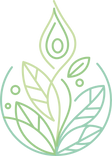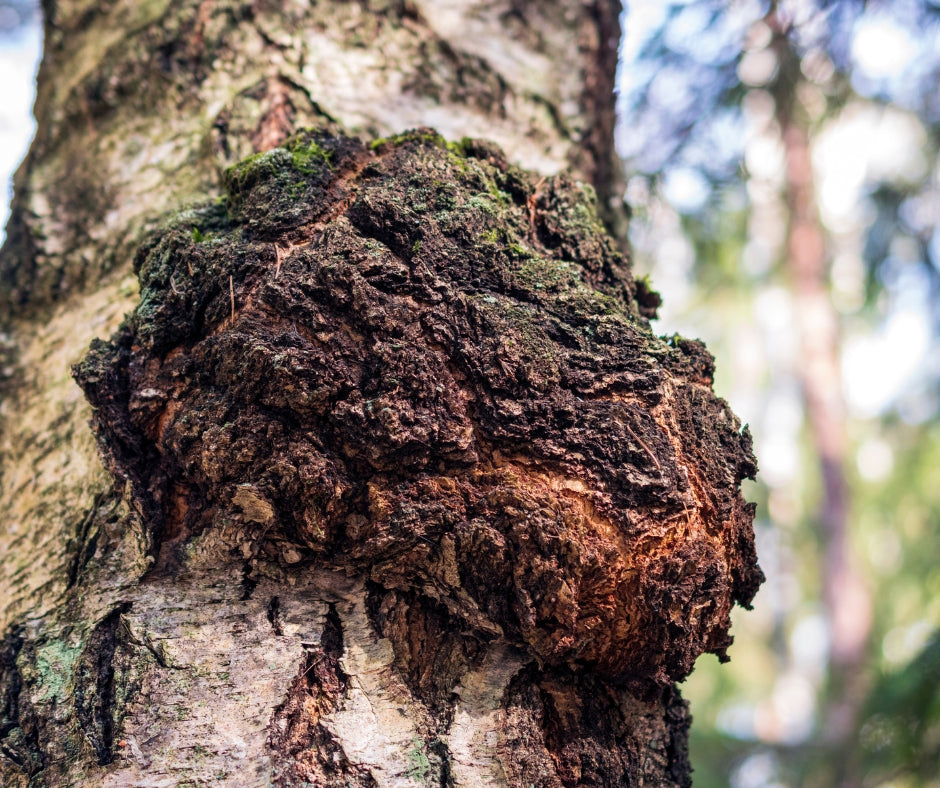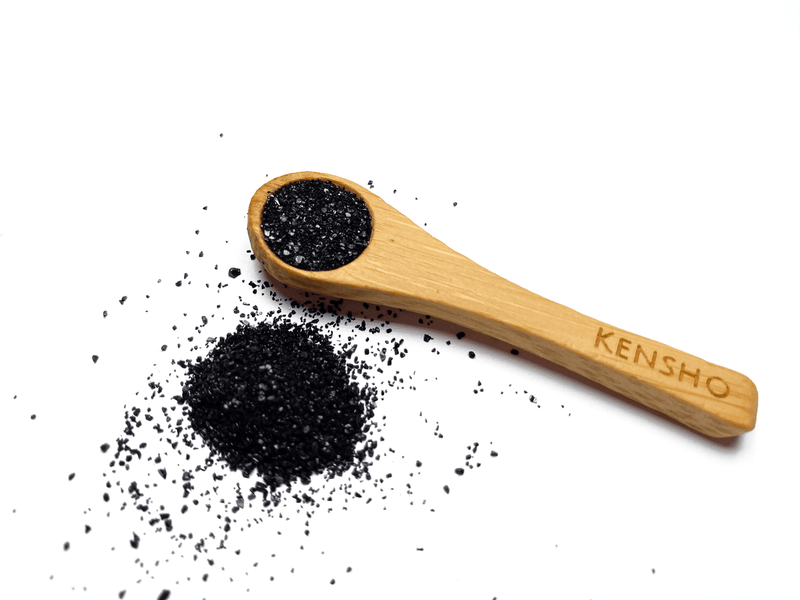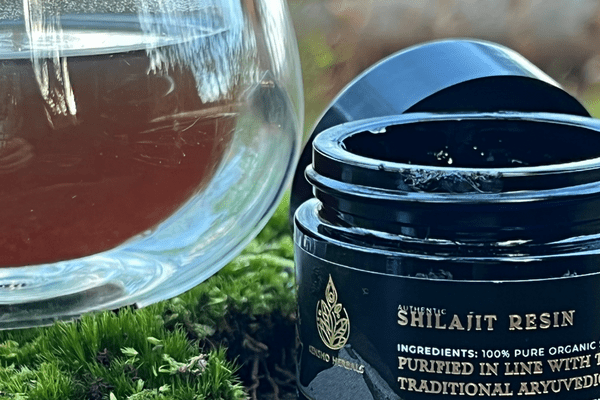Did you know that Chaga mushrooms were once so valued for their health benefits that they were used as currency in some parts of Siberia? This remarkable fungus has been a beacon of health and wellness for centuries, transcending cultures and continents with its potent healing properties.
Chaga mushroom, known scientifically as Inonotus obliquus, have intrigued and healed humans for centuries. Thriving on birch trees in cold climates, this fungus is more than just a mushroom; it's a storied natural remedy with a rich tapestry of history and traditional use. This article aims to peel back the layers of time to explore Chaga's roots, from its revered status in ancient medicine to its modern-day acclaim. The journey through Chaga's past will illuminate its significance, offering readers a deep appreciation for this ancient healer.

The Historical Roots of Chaga Mushroom
Chaga mushrooms have fascinated humans with their unique characteristics and potent health benefits for centuries. This dark, clumpy fungus thrives in the harsh climates of Siberia, Northern Europe, and North America, primarily on birch trees.
Historical records suggest Chaga's use dates back to the 16th century when it was utilized in Siberia and parts of Asia for its medicinal properties. Its significance in traditional Chinese medicine and among indigenous tribes of Siberia and North America highlights a global appreciation for its healing potential.
Chaga's ability to boost immunity, improve overall health, and even treat certain diseases made it a valuable component of ancient wellness practices.
Chaga in Traditional Chinese Medicine
In traditional Chinese medicine (TCM), Chaga has been a symbol of vitality and longevity. Used to treat a myriad of ailments, from digestive issues to skin conditions, Chaga's role in TCM is profound. The philosophy underpinning its use involves balancing the body's vital energy, or Qi, and enhancing the immune system to ward off illness.
Practitioners of TCM have long valued Chaga for its antioxidant properties, viewing it as a powerful tool in the fight against aging and chronic disease. This deep-rooted belief in Chaga's efficacy reflects a broader understanding of wellness, one that encompasses the body, mind, and spirit.

Indigenous Practices Across Siberia and North America
Indigenous communities in Siberia and North America have long recognized the Chaga mushroom for its exceptional healing powers. In Siberia, the Khanty people traditionally brewed Chaga into tea, a practice believed to combat infections, stomach diseases, and even cancer. This tea was not just a remedy but a daily elixir for maintaining health and vitality.
Similarly, in North America, Native American tribes used Chaga as part of their medicinal lore, utilizing it to treat various ailments and as a spiritual enhancer during rituals. For these communities, Chaga was more than a fungus; it was a sacred component of their connection to nature and a key element of their holistic health practices, embodying a deep understanding of natural remedies passed down through generations.
Traditional Harvesting Methods
The traditional harvesting of Chaga mushrooms is a testament to the deep respect indigenous and local communities have for nature. Harvesters carefully select mature Chaga conks, which can take up to 20 years to grow, ensuring they do not damage the host birch tree or deplete the fungus entirely. The process is labor-intensive, involving climbing the birch trees and using tools to gently remove the Chaga without harming the tree's bark.
This sustainable approach reflects an intimate knowledge of the ecosystem and a commitment to preserving these natural resources for future generations. Respect for the environment and mindful harvesting practices are crucial for maintaining the balance between human consumption and the health of the forest.
Ancient Remedies and Modern Uses
Chaga mushrooms have been a cornerstone of traditional medicine for centuries, revered for their healing properties across various cultures. This section explores the ancient remedies associated with Chaga, detailing traditional methods of preparation and consumption, and contrasts these with the contemporary applications and scientific research surrounding this remarkable fungus.
Ancient Remedies:
Tea Brewing:
Historically, the most common use of Chaga was in the form of tea. Indigenous Siberians and North Americans would harvest the mushroom, dry it, and then simmer it in water for several hours to produce a dark, rich tea. This method was believed to extract the Chaga's medicinal properties most effectively.
- Preparation: Chaga chunks or powder simmered in water for 3-5 hours.
- Consumption: Consumed daily to boost immunity, promote longevity, and treat various ailments.
Topical Applications:
Chaga was also used externally. The ground powder was mixed with water or oil to form a paste applied to the skin to heal wounds, rashes, and other skin conditions.
- Preparation: Ground Chaga mixed with water or oil to form a paste.
- Application: Applied directly to the skin for its anti-inflammatory and healing properties.
Spiritual Practices:
Beyond physical health, Chaga held a place in spiritual healing practices. It was used in rituals and ceremonies to cleanse the body and spirit, believed to connect individuals with higher energies.
- Use: Incorporated into spiritual rituals for purification and healing.

Modern Uses and Research:
The transition from ancient remedies to modern uses of Chaga has been marked by a significant expansion in the forms of consumption and the scope of its purported health benefits, supported by emerging scientific research.
Supplements and Extracts:
With advancements in technology, Chaga is now available in various forms, including capsules, tinctures, and powders. These products often utilize freeze-dried or extract processes to concentrate Chaga's bioactive compounds.
- Bioavailability: Modern extraction methods aim to improve the bioavailability of Chaga's compounds, making them more accessible to the body.
- Convenience: These forms offer a convenient way for individuals to incorporate Chaga into their daily health regimen.
Cosmetic Products:
Recognizing Chaga's antioxidant and anti-inflammatory properties, the beauty industry has begun incorporating Chaga extracts into skincare products.
- Products: Creams, serums, and masks containing Chaga extract.
- Benefits: Aimed at reducing inflammation, combating free radicals, and promoting skin health.
Scientific Research:
Contemporary research has begun to validate the health benefits attributed to Chaga, exploring its potential in cancer prevention, immune support, and inflammation reduction.
- Cancer Research: Studies have investigated Chaga's ability to inhibit cancer cell growth and induce apoptosis in tumor cells.
- Immune System Support: Research has highlighted Chaga's role in modulating the immune system, potentially offering protection against various diseases.
Comparison:
The journey from ancient to modern uses of Chaga illustrates not only a continuity in the belief in its healing powers but also an evolution in how these benefits are harnessed and understood.
Traditional methods of preparation and consumption, rooted in a holistic approach to wellness, have been complemented by scientific research and innovation, expanding the applications of Chaga and bringing its ancient wisdom into the modern health landscape.
This blend of tradition and science underscores the timeless value of Chaga mushrooms as a natural remedy and highlights the growing interest in natural, plant-based supplements for health and wellness.
The Cultural Significance of Chaga Mushrooms
Across different cultures, Chaga mushrooms hold a place of reverence and mystique, woven into the fabric of numerous folk tales, myths, and traditional beliefs. In Siberia, Chaga was considered the 'Mushroom of Immortality,' a testament to its life-extending properties. Amongst the native people of North America, it was seen as a gift from the Creator, a means of communicating with the spiritual world and curing physical ailments.
These cultural narratives highlight the deep spiritual and health connections indigenous peoples have with nature, portraying Chaga as a bridge between the earthly and the divine. This rich tapestry of stories and beliefs has significantly shaped the modern perception of Chaga, elevating it from a mere fungus to a symbol of wellness and a superfood in the global health community.

Challenges and Preservation
The surge in Chaga's popularity presents both opportunities and challenges in preserving traditional knowledge and sustainable harvesting practices. Overharvesting poses a significant threat to Chaga populations, particularly as the fungus requires decades to grow. Moreover, the loss of indigenous knowledge due to the diminishing transmission between generations, further complicates the sustainable use of this resource.
Efforts to sustainably manage Chaga resources are underway, with initiatives aimed at educating harvesters on sustainable practices and promoting regulations that protect these fungi. Additionally, collaborations with indigenous communities are crucial in preserving the traditional knowledge surrounding Chaga, ensuring that this ancient wisdom continues to inform and guide modern practices.
Conclusion
The journey through the history and traditional uses of Chaga mushrooms reveals a complex narrative of human interaction with the natural world. Chaga stands as a testament to the enduring search for health and wellness, bridging ancient traditions and modern science.
Understanding and appreciating the traditional uses of natural remedies like Chaga is crucial in today's health-conscious society, reminding us of the importance of sustainability, respect for indigenous knowledge, and the interconnectedness of life. As we continue to explore the benefits of Chaga mushrooms, let us do so with mindfulness of their rich heritage and the need to preserve these ancient healers for future generations.




